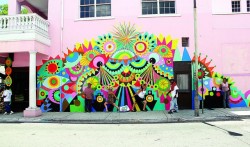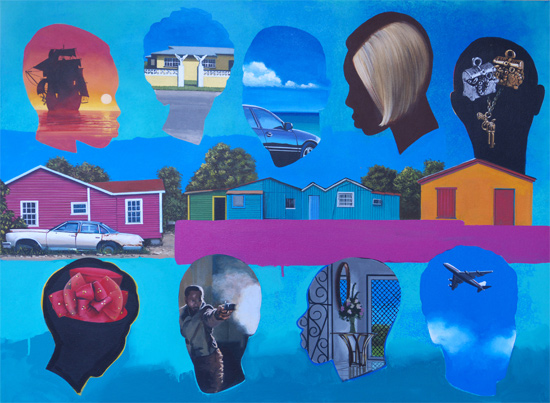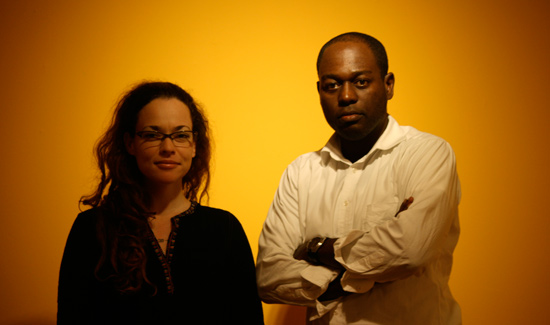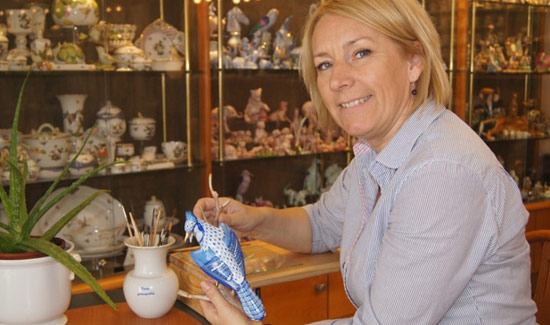
The presence of public art installations and communities of artists in downtrodden cities around the world have consistently brought vitality back to the areas in the form of a thriving culture and economy.
Often, such a transformation is accidental – that is, not always included in government plans to improve and redevelop stagnant communities. Rather, artists often move to areas offering cheap rent rates and do what they do best: create and form community.
Sometimes, government–funded initiatives are on the same page and use art and culture to inject life back into their cities – just look at the Guggenheim Museum in Bilbao, or the decision to make Nantes, France a place of public art, saving the city. In these cases, the move is an often-desperate last attempt to save a struggling city – and it works beautifully because art has the power to transform urban economies and communities.
Such was the message at a talk this past Wednesday morning on art and urban renewal led by Vaughn Roberts, the former managing director (and current board member) of the Downtown Nassau Partnership.
“I think public art installations are absolutely critical to a city’s development from the perspective that it engages a community of creative people,” he said.
“The work often represents the identity of the place and puts it in a public forum for others to engage with to improve their quality of life, allow them to imagine other possibilities, to be creative, and to have discussion and dialogue around social issues. So it’s very important for art to be taken out of the gallery and museum and put in the public realm.”
As managing director of the DNP – formed to achieve progressive redevelopment of the city of Nassau – Roberts recognized the significant role public art could play in achieving their goals and launched in 2010 the Love My Bahamas Downtown Art Project. Funded by Coca-Cola, it invited 14 local artists and two internationals artists to create murals and art installations in the downtown Nassau area.
“The work downtown is critical because of the economic development and activity that comes from it,” he pointed out. “It’s also much more attractive looking at beautiful art than looking at a derelict building.”
“But as a vehicle for social dialogue and change I think putting art in the public realm is important,” he added. “Public expression of art is important regardless of where you live – you have an opportunity to engage the public in this dialogue and to inspire the public through this expression.”
So why then, as this community dialogue was taking place, were two of these completed murals painted over?
Indeed several of the participants in the morning’s talk were shocked and saddened to witness, as they rounded the corner to take the bus on Frederick Street, that the vibrant murals by local artist Toby Lunn and international artist Maya Hayuk had completely vanished. Similar sentiments echoed across the community as the image made the rounds in social networks asking who was at fault, and whether any of the other murals were next.
As it turns out, the contract with the building owners upon which the murals were painted had run out at the end of last year – and many of the other contracts have too, save for the few pieces – like that by Antonius Roberts – in public space. However, it is up to the building owner now, says Roberts, to decide to remove the piece or not. Add to that the change in the management and direction of the Downtown Nassau Partnership – as Roberts left his managing director position yet still serves on the board and shares that less emphasis will be placed on programming – and the Love my Bahamas Art Campaign murals and installations stand in limbo.
“The plan was that as we approached December 2011, we would go back and make an assessment of the works and see if any needed to be refurbished or maintained, and also visit with the property owner to see if there was an appetite to extend beyond the contracted end, or to look at possible relocation of some works,” said Roberts. “The project was also meant to expand too.”
“But unfortunately, I left my position and the DNP day-to-day, and there isn’t really anyone involved with the day-to-day, so these projects are the ones that tend to have lower priority,” he continued. “Nobody there is as interested in art as I am, and there isn’t anyone who was as focused on programming as I was. So that’s probably why it never got executed.”
The prospect of losing such public art pieces like the two already vanished is rather unfortunate indeed. Like the East of East Street project which sought to paint over dilapidated buildings in the eastern part of downtown Nassau, the Love my Bahamas Art Campaign has for years added colorful facades, as well as thought-provoking subject-matter, to the life of downtown for both locals and tourists to enjoy. Just as East of East Street has since seen economic activity on the eastern side of Downtown, the Love My Bahamas Campaign was the source of a variety of downtown art tours. What happens if we lose these?
For Roberts, the way to go from here is to expand the use of art in the public spaces to all over Nassau. As he points out, urban renewal is a hot topic these days, and the focus is not only on downtown Nassau any longer, but rather – with Urban Renewal 2.0 – all over New Providence.
“I think that the efforts in the inner city communities to address crime and social development needs to expand beyond social change toward economic empowerment and economical development, education and training, and significant investment,” said Roberts. “I think certainly art and creative industries have a role there when you think about a way to engage people in the community and the creation of work and to use art as a vehicle to promote change, education, awareness and upliftment.”
With Urban Renewal 2.0, one of the goals is to engage young people in positive activities. What if this expanded the role of the Junkanoo Shack?
What if this meant establishing a mural painting community initiative for public spaces that sought to beautify derelict areas with paintings that engaged with our cultural identities and history?
What if this meant establishing a sculpture-building initiative like the Bench Making Program by Antonius Roberts, that seeks to recycle discarded material and teach young men certain skills?
What if this meant creating more spaces not only for Junkanoo practice but where positive film screenings like this weekend’s Black Power Community Film Festival, or this summer’s Theatre in the Parks, can take place?
What if every church used art to define its spiritual grounds and bring its congregation and surrounding community together in a sacred space of public art like the New Providence Community Church?
What if art was at the center of every new roundabout, incorporated into every new space? What would happen then?
The only way we will know, says Roberts, is not to wait on any government entity to do it (nevertheless, if Government officials happen to make it into this paper section, please take note). Displays of public art are up to the community of artists – and if this week’s loss of two great murals has shown us anything, it’s that it is time for the arts community to step up and take responsibility for starting and continuing these kinds of conversations.
“I think what this suggests is that people involved in the arts community need to take bolder steps to expose the community to our work,” said Roberts. “I’d like to put more responsibility on us in the art community to be bolder about how we engage the public and not about the public pushing us back into the corner.”
“I think there is this need for public art to change, for there to be this constant sort of freshness about it so that the engagement and the conversation actually continues, and so that it doesn’t just become part of the landscape or background, but rather live at the forefront.”
For Roberts, it means jump-starting a public art fund that raises money for significant exhibitions around New Providence – something that has been on his mind of some time, and now become even more urgent with the loss of two murals. For his part, he’s meeting again with the sponsors of the Love My Bahamas Art Campaign – Coca Cola – to see how he can make this a reality.
But it’s going to take more than one person to remind the community that art matters. It was up to the building owners to paint over their building, and their decision rings clear with their thoughts about public art. As Roberts says, there will be people who like the work and people who don’t, but if we as an art community stay in the vacuum, we have no recourse to wonder why we are the only ones who notice when art dies.
By: Sonia Farmer
Source: The Nassau Guardian



